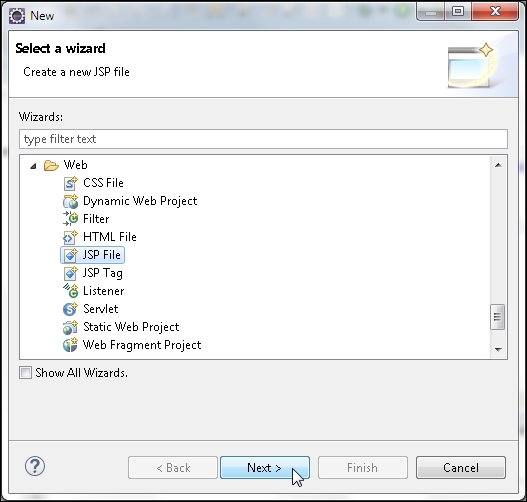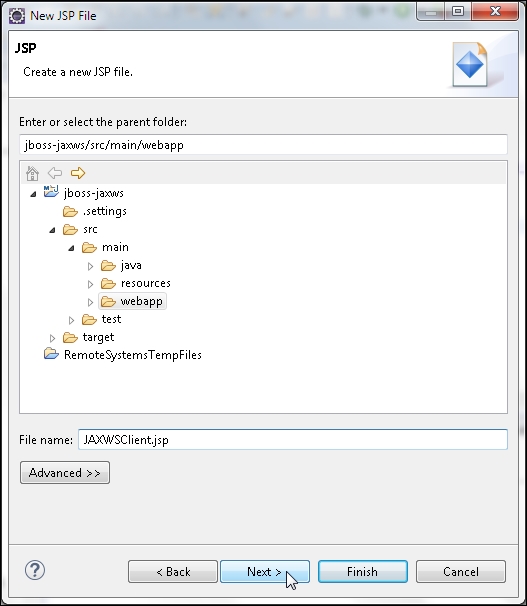In this section, we will create a JSP Web Service client for the HelloWorld web service. To create a JSP, select File | New | Other. In New, select Web | JSP File and click on Next, as shown in the following screenshot:

In the New JSP File wizard, select the webapp folder, specify File name as JAXWSClient.jsp, and click on Next, as shown in the following screenshot:

Select the New JSP file (html) template and click on Finish. The JAXWSClient.jsp file gets added to the webapp folder. In the client JSP, we will invoke the web service with a name and display the web service response in the browser. First, create a URL object for the WSDL. The URL for a web service is constructed from the context root + endpoint:
URL wsdlLocation = new URL("http://localhost:8080/jboss-jaxws/HelloWorld?WSDL");The jboss-jaxws in the URL is the context root and the /HelloWorld is the servlet mapping URL for the web service endpoint as specified in the web.xml. Next, create a QName object...



